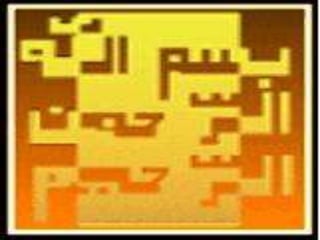
Saarc
- 1. BBA-14(7)
- 2. Presented by: Muhammad Adil Jabran Umer Muhammad Faisal Ashraf Syed UzairAmin Danish JavaidMughal BBA-14(7)
- 3. Agenda/ contents Introduction Objectives Current members OBSERVER AND FUTURE MEMBERS AREAS OF COOPERATION SAARC share in Global Trade Trade Agreements SAPTA SAFTA Countervailing forces BBA-14(7)
- 4. Introduction The South Asian Association for Regional Cooperation (SAARC) was established when its Charter was formally adopted on December 8, 1985 by the Heads of State or Government of Bangladesh, Bhutan, India, Maldives, Nepal, Pakistan and Sri Lanka. SAARC provides a platform for the peoples of South Asia to work together in a spirit of friendship, trust and understanding. It aims to accelerate the process of economic and social development in Member States. BBA-14(7)
- 5. Objectives To promote the welfare of the people of South Asia and to improve their quality of life To accelerate economic growth, social progress and cultural development in the region and to provide all individuals the opportunity to live in dignity and to realize their full potential; To promote and strengthen collective self-reliance among the countries of South Asia; To contribute to mutual trust, understanding and appreciation of one another's problems; To promote active collaboration and mutual assistance in the economic, social, cultural, technical and scientific fields; To strengthen cooperation with other developing countries; To strengthen cooperation among themselves in international forums on matters of common interest; and To cooperate with international and regional organisations with similar aims and purposes. BBA-14(7)
- 6. Current members(alphabetically) Afghanistan Bangladesh Bhutan India Maldives Nepal Pakistan Sri Lanka BBA-14(7)
- 7. OBSERVER AND FUTURE MEMBERS Australia China European Union Iran Japan Mauritius Myanmar (Burma) South Korea United States BBA-14(7)
- 8. AREAS OF COOPERATION AREAS OF COOPERATION Agriculture and Rural Development; Health and Population Activities; Women, Youth and Children; Environment and Forestry; Science and Technology and Meteorology; Human Resources Development; and Transport. Recently, high level Working Groups have also been established to strengthen cooperation in the areas of Information and Communications Technology, Biotechnology, Intellectual Property Rights, Tourism, and Energy. BBA-14(7)
- 9. SAARC share in Global Trade In particular, South Asia’s share in global trade is a little over 1% Share in global merchandise exports increased from 0.9% in 1990 to 1.2% in 2005 Share in global commercial services exports increased from 0.87% in 1990 to 2.5% in 2005 BBA-14(7)
- 10. Intra-regional Merchandise Exports, 2005(as % share of each region’s total exports) BBA-14(7)
- 11. Regional Shares in World Merchandise Exports, 1990, 2000, 2005 BBA-14(7)
- 12. SAARC REGIONAL GDP SAARC is mainly dominated in terms of GDP by big countries i.e. India and Pakistan thus creating a sense of monopoly. India has highest share of GDP of 79% Pakistan has a share of 11%. The rest 6 countries have combined share of 10%. BBA-14(7)
- 13. Afghanistan 1% Pakistan Bangladesh 11% Sri Lanka 6% 2% Nepal Bhutan 1% Maldives 0% 0% India 79% Country Share of SAARC Regional GDP 2005, (US$ 995.82 billion) BBA-14(7)
- 14. Trade Agreements The launching of South Asian Preferential Trade Arrangement (SAPTA) in 1995 was the first major political breakthrough for the SAARC since it was the first regional agreement on economic cooperation. A decade after the preferential trade arrangement (PTA) took effect, the South Asian Free Trade Agreement (SAFTA) was signed in 2004 and came into effect in 2006, replacing the SAPTA. BBA-14(7)
- 15. SAPTA In December 1991, the Sixth Summit held in Colombo approved the establishment of an Inter-Governmental Group (IGG) to formulate an agreement to establish a SAARC Preferential Arrangement (SAPTA) by 1997. Given the consensus within SAARC, the Agreement on SAPTA was signed on 11 April 1993 and entered into force on 7 December 1995 well in advance of the date stipulated by the Colombo Summit. The Agreement reflected the desire of the Member States to promote and sustain mutual trade and economic cooperation within the SAARC region through the exchange of concessions. BBA-14(7)
- 16. Principles on SAPTA Overall reciprocity and mutuality of advantages so as to benefit equitably all contracting states. Negotiation of tariff reform step by step, improved and extended in successive stages through periodic reviews. Recognition of the special needs of the least developed contracting states and agreement on concrete preferential measures in their favors. BBA-14(7)
- 17. South Asian Free Trade Area (SAFTA) The idea of a regional FTA was under discussion since the early 1990s as can be seen from the deliberations within the offcial SAARC process. The sixteenth session held in Delhi in December 1995 agreed to work towards the setting up of SAFTA Finally, the SAFTA Agreement was signed on January 6, 2004 during the 12th Summit in Islamabad. The Agreement came into operation on January 1, 2006, and the formal notifcation was issued by the SAARC Secretariat on March 22, 2006. BBA-14(7)
- 18. SAFTA SAFTA requires the developing countries in South Asia, that is, India, Pakistan and Sri Lanka, to bring their duties down to 20 percent in the first phase of the two year period ending in 2007. In the final five year phase ending 2012, the 20 percent duty will be reduced to zero in a series of annual cuts. The least developed nations in South Asia consisting of Nepal, Bhutan, Bangladesh and Maldives have an additional three years to reduce tariffs to zero. Pakistan has signed but not ratified the treaty, though India has recently signed it but has not implemented it yet. BBA-14(7)
- 19. Countervailing forces Political issues Kashmir dispute Sri Lankan civil war Terrorism Monopolistic Behavior of India Since its foundation SAARC has not act as a platform to solve disputes between countries and has not focused on core economical and social issues. BBA-14(7)